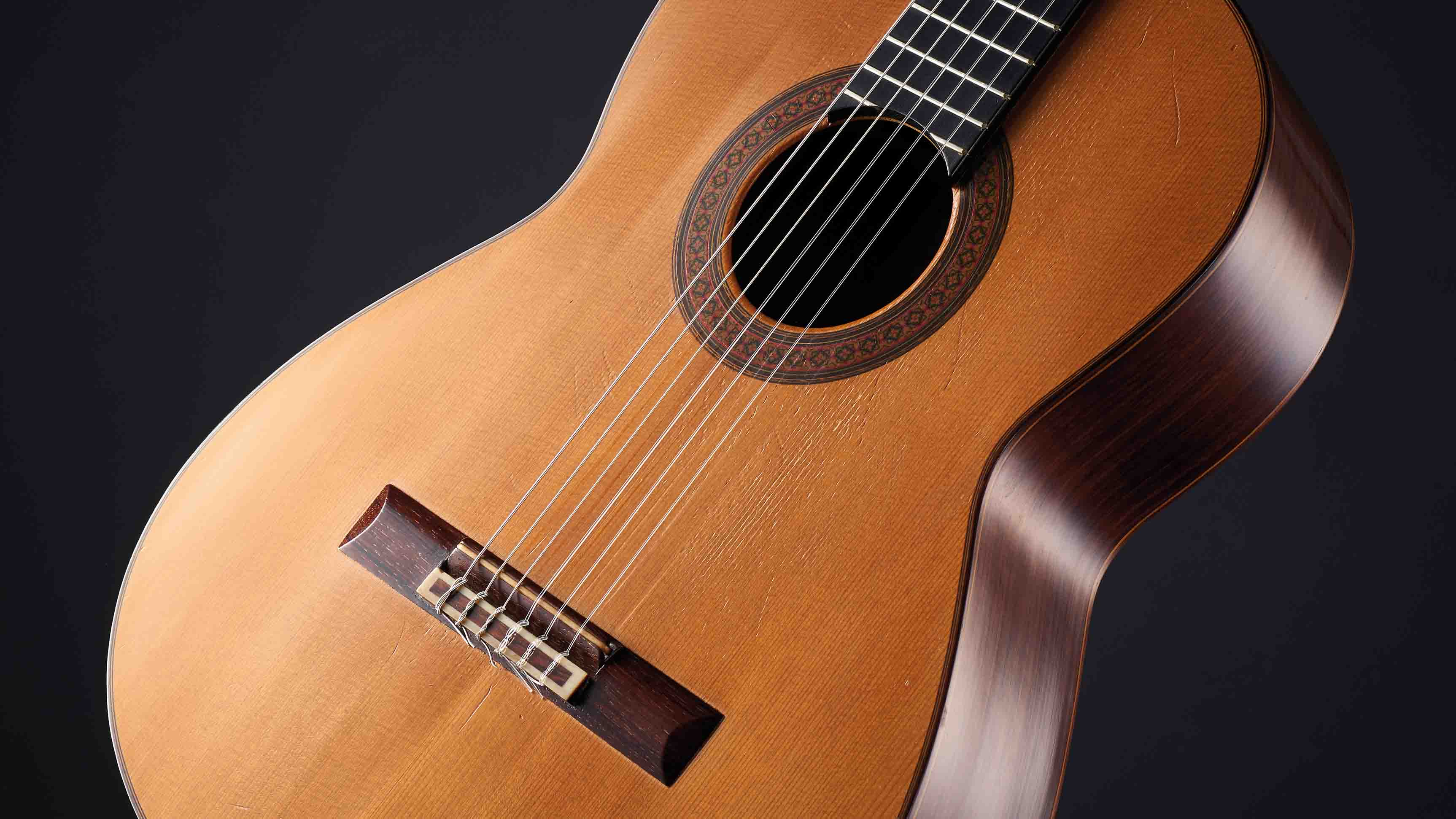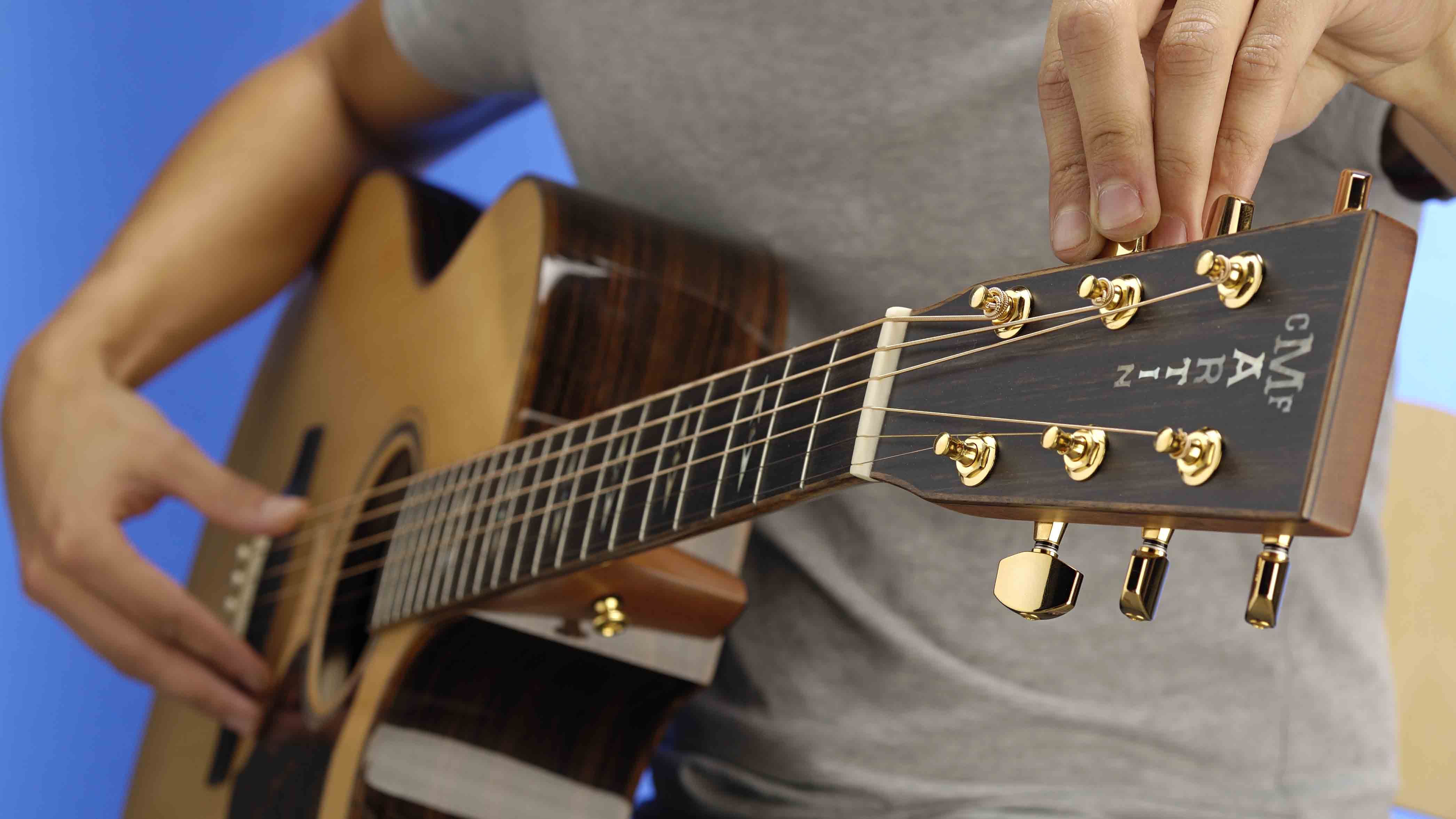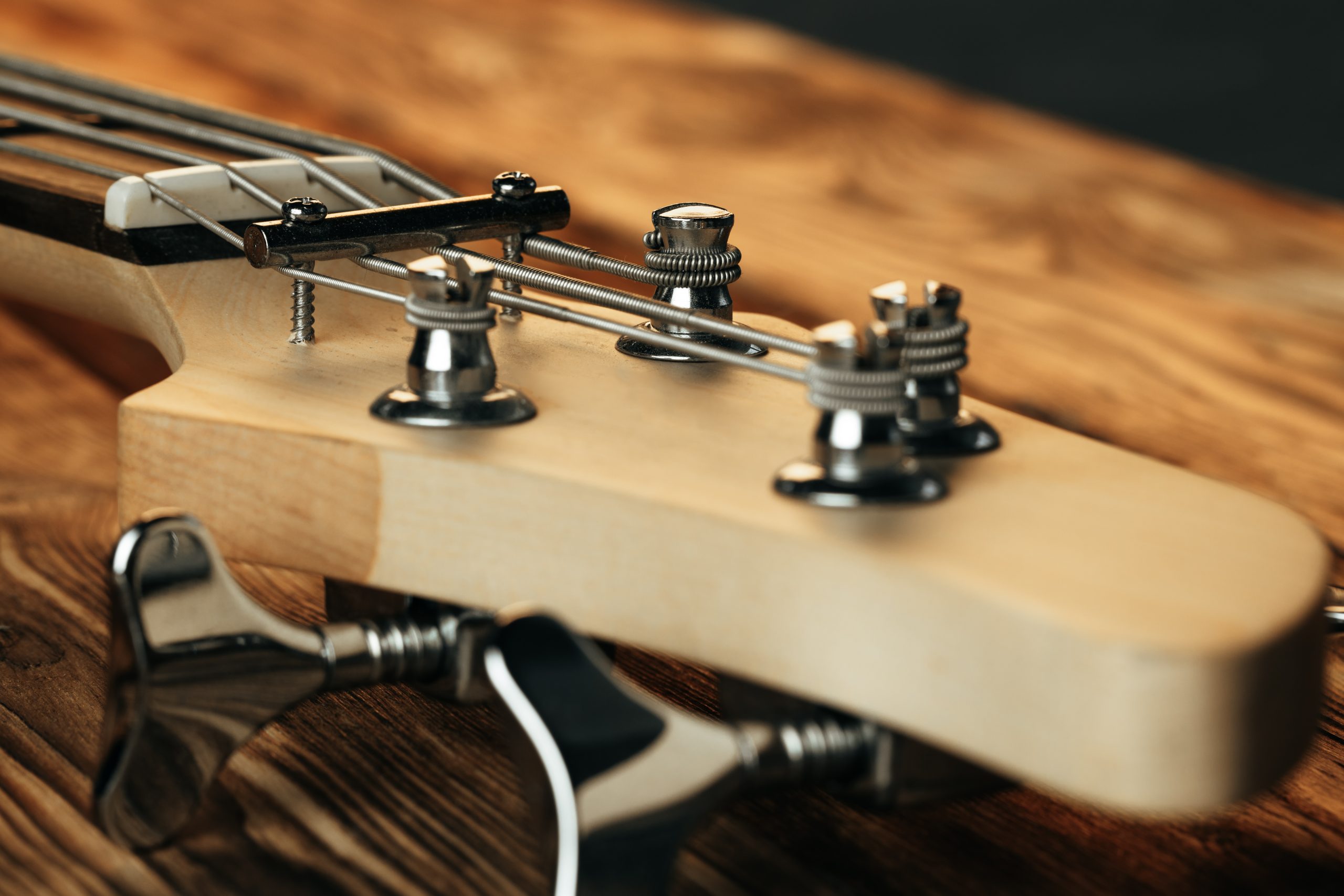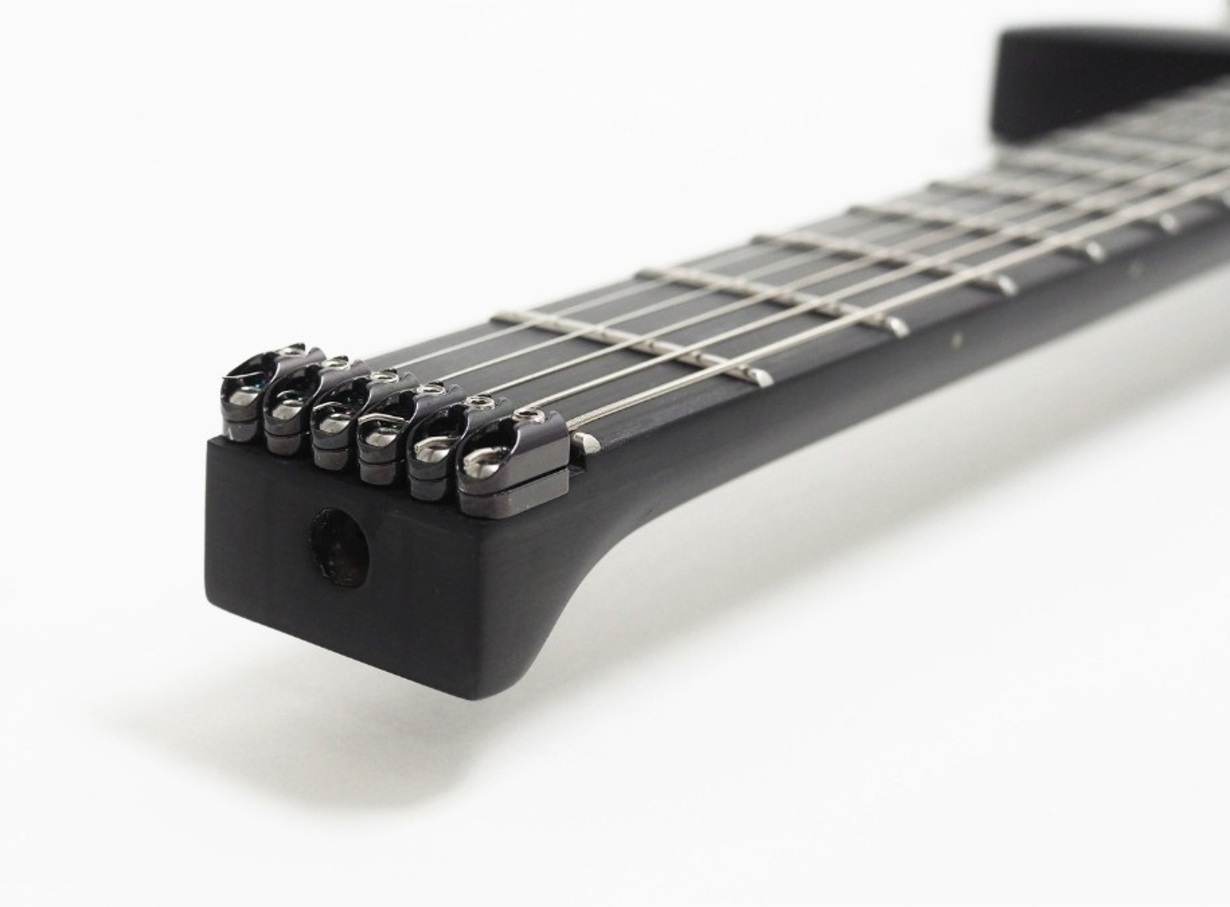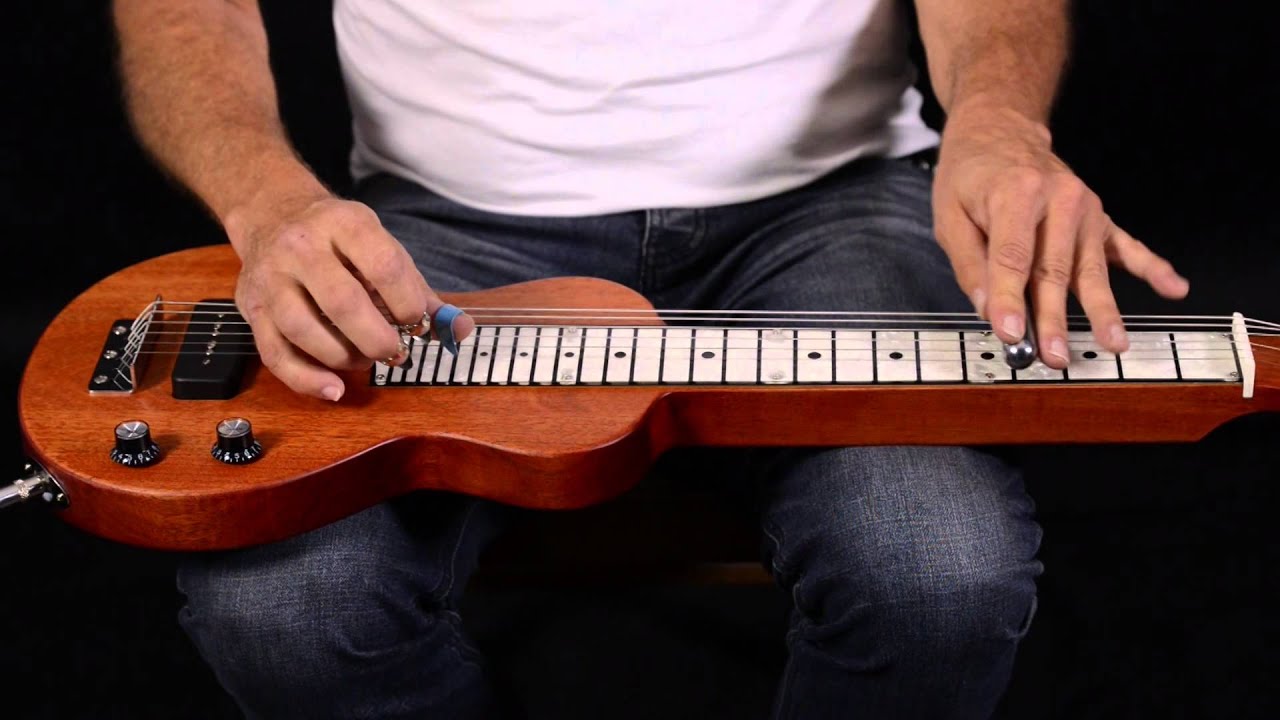Home>Production & Technology>Acoustic>How To Tune An Acoustic Guitar Without A Tuner


Acoustic
How To Tune An Acoustic Guitar Without A Tuner
Published: March 11, 2024
Learn how to tune your acoustic guitar without a tuner using these simple and effective methods. Keep your guitar sounding great with these tuning tips.
(Many of the links in this article redirect to a specific reviewed product. Your purchase of these products through affiliate links helps to generate commission for AudioLover.com, at no extra cost. Learn more)
Table of Contents
Introduction
Tuning an acoustic guitar is a fundamental skill that every guitarist should master. Whether you're a beginner or an experienced musician, keeping your guitar in tune is essential for producing beautiful, harmonious sounds. While using a digital tuner is the most convenient method, there are situations where a tuner may not be readily available. In such cases, knowing alternative tuning methods can be invaluable.
In this article, we will explore three effective techniques for tuning an acoustic guitar without a tuner. Each method offers a unique approach to achieving accurate tuning, allowing you to maintain the perfect pitch of your guitar strings. By mastering these techniques, you can ensure that your acoustic guitar produces the rich, resonant tones that captivate audiences and elevate your musical performances.
Tuning an acoustic guitar without a tuner requires a keen ear and a good understanding of pitch and harmony. It's a skill that not only enhances your musical abilities but also deepens your connection with your instrument. As you embark on this journey to learn alternative tuning methods, remember that practice and patience are key. With dedication and perseverance, you can develop a finely-tuned ear and confidently tune your acoustic guitar to perfection, regardless of the circumstances.
Now, let's delve into the fascinating world of acoustic guitar tuning and discover the art of achieving pitch-perfect harmony without the aid of a digital tuner. Whether you're in a remote location, experiencing technical difficulties, or simply seeking to expand your musical expertise, these methods will empower you to tune your acoustic guitar with precision and finesse. Let's embark on this musical adventure and unlock the secrets of tuning an acoustic guitar without a tuner.
Method 1: Using a Reference Pitch
Using a reference pitch is a traditional yet effective method for tuning an acoustic guitar without a tuner. This technique relies on the ability to match the pitch of one string to another, creating a harmonious relationship between the strings. To begin, you can use a reliable reference pitch from an external source, such as a piano, tuning fork, or another tuned instrument. Here's a step-by-step guide to tuning your acoustic guitar using a reference pitch:
-
Select a Reference Pitch: Choose a stable reference pitch to serve as a point of comparison for tuning your guitar strings. A piano, tuning fork, or another tuned instrument can provide a clear and consistent reference pitch.
-
Tune the Low E String: Start by tuning the low E string (the thickest string) to the reference pitch. Pluck the low E string and listen carefully to its sound. Adjust the tuning peg until the pitch of the string matches the reference pitch.
-
Tune the A String: Once the low E string is in tune, use it as a reference to tune the A string. Press down on the fifth fret of the low E string to produce the same pitch as the open A string. Adjust the tuning peg of the A string until both pitches align.
-
Tune the D String: Similarly, use the fifth fret of the A string as a reference to tune the open D string. Match the pitch of the open D string to the fifth fret of the A string and make any necessary adjustments.
-
Tune the G String: Proceed to tune the G string by using the fifth fret of the D string as a reference pitch. Align the pitch of the open G string with the fifth fret of the D string.
-
Tune the B String: To tune the B string, utilize the fourth fret of the G string as a reference pitch. Adjust the tuning peg of the B string until it harmonizes with the pitch produced at the fourth fret of the G string.
-
Tune the High E String: Finally, tune the high E string by matching its pitch to the fifth fret of the B string. Fine-tune the high E string until it resonates with the reference pitch.
By using a reference pitch and following these steps, you can effectively tune your acoustic guitar without the aid of a digital tuner. This method not only hones your ear for pitch but also fosters a deeper understanding of the harmonic relationships between the guitar strings. With practice, you can confidently rely on this technique to achieve precise tuning and unleash the full musical potential of your acoustic guitar.
Method 2: Using a Piano or Keyboard
Utilizing a piano or keyboard as a tuning reference offers a reliable and accessible method for achieving accurate tuning of an acoustic guitar. The distinct and consistent pitch produced by piano keys serves as an excellent point of reference for aligning the guitar strings to the correct notes. This technique is particularly advantageous in situations where a digital tuner is unavailable, making it a valuable skill for guitarists in various settings.
To begin tuning your acoustic guitar using a piano or keyboard, follow these steps:
-
Select a Reference Note: Start by identifying a stable and well-tuned note on the piano or keyboard. The middle C note (C4) is commonly used as a reference due to its central position on the keyboard and its prevalence in musical compositions.
-
Tune the Low E String: Pluck the low E string on your guitar and listen to its pitch. Then, play the reference C note on the piano or keyboard and compare the two tones. Adjust the tuning peg of the low E string until its pitch matches the reference C note.
-
Tune the A String: After tuning the low E string, press down on the fifth fret of the low E string to produce the note A. Compare this note to the A note on the piano or keyboard and adjust the tuning peg of the A string to achieve the desired pitch.
-
Tune the D, G, B, and High E Strings: Similarly, use the fifth fret method to tune the remaining strings, ensuring that each string aligns with the corresponding notes on the piano or keyboard.
By leveraging the distinct and consistent pitch of a piano or keyboard, you can effectively tune your acoustic guitar with precision and accuracy. This method not only fosters a deeper appreciation for musical harmony but also enhances your ability to recognize and replicate specific pitches. With practice, you can confidently rely on this technique to maintain the optimal tuning of your acoustic guitar, ensuring that it resonates with captivating clarity and resonance.
Using a piano or keyboard as a tuning reference empowers guitarists to achieve pitch-perfect tuning without the need for a digital tuner, making it a valuable skill for musicians across diverse musical environments. Whether you're at home, in a studio, or performing on stage, mastering this method enables you to uphold the impeccable tonal quality of your acoustic guitar, enriching your musical expression and captivating audiences with every chord and melody.
Method 3: Using Harmonics
Harnessing harmonics is a sophisticated and nuanced approach to tuning an acoustic guitar without a tuner. Harmonics, also known as overtones, are pure, ethereal tones that resonate above the fundamental frequency of a string. By leveraging harmonics, guitarists can achieve precise tuning and elevate the sonic resonance of their instrument.
To begin using harmonics for tuning, follow these steps:
-
Understand Natural Harmonics: Natural harmonics can be produced by lightly touching the strings at specific nodal points and plucking them to generate a bell-like, chiming sound. The fundamental harmonics occur at the 12th, 7th, and 5th frets of the guitar, producing the octave, octave plus a perfect fifth, and double octave harmonics, respectively.
-
Tune the Low E String: Start by tuning the low E string to a reliable reference pitch. Once the low E string is in tune, proceed to the next step.
-
Produce the 5th Fret Harmonic: Lightly place your finger over the low E string directly above the 5th fret, without pressing the string down, and pluck the string. This action will produce the natural harmonic at the 5th fret.
-
Compare with the 7th Fret Harmonic: Next, produce the natural harmonic at the 7th fret of the low E string by lightly touching the string above the 7th fret and plucking it. Compare the pitch of this harmonic with the natural harmonic at the 5th fret.
-
Adjust the String: If the pitch of the 7th fret harmonic is higher than the 5th fret harmonic, the string is flat and needs to be tightened. Conversely, if the pitch is lower, the string is sharp and should be loosened. Continue adjusting the tuning peg until the 7th fret harmonic matches the pitch of the 5th fret harmonic.
-
Repeat for the A, D, G, B, and High E Strings: Utilize the same process of comparing harmonics to fine-tune the remaining strings of the acoustic guitar, ensuring that each string resonates with clarity and precision.
By incorporating harmonics into the tuning process, guitarists can cultivate a heightened sensitivity to the subtle nuances of pitch and resonance. This method not only fosters a deeper connection with the instrument but also enhances the musician's ability to discern and manipulate tonal qualities with finesse and precision.
Mastering the art of tuning an acoustic guitar using harmonics empowers musicians to achieve impeccable pitch and resonance, even in the absence of a digital tuner. This skill is invaluable for guitarists seeking to refine their musical proficiency and elevate their performances with captivating, harmonically rich sounds.
Conclusion
In conclusion, mastering the art of tuning an acoustic guitar without a tuner opens up a world of musical possibilities and empowers guitarists to maintain pitch-perfect harmony in any situation. The three methods explored in this article – using a reference pitch, leveraging a piano or keyboard, and harnessing harmonics – offer valuable techniques for achieving accurate tuning and enhancing the sonic resonance of the acoustic guitar.
By honing the skill of tuning with a reference pitch, guitarists can develop a keen ear for pitch and harmonious relationships between strings. This method not only fosters a deeper understanding of musical intervals but also cultivates a heightened sensitivity to the nuances of pitch, enabling musicians to maintain precise tuning without the reliance on digital tools.
Utilizing a piano or keyboard as a tuning reference provides a reliable and accessible method for achieving accurate tuning. This technique not only enhances a guitarist's ability to recognize and replicate specific pitches but also fosters a deeper appreciation for musical harmony. Whether in a studio, at home, or on stage, mastering this method empowers musicians to uphold the impeccable tonal quality of their acoustic guitar, captivating audiences with every chord and melody.
Furthermore, harnessing harmonics for tuning represents a sophisticated approach that elevates the sonic resonance of the acoustic guitar. By incorporating harmonics into the tuning process, guitarists can cultivate a heightened sensitivity to the subtle nuances of pitch and resonance. This method not only fosters a deeper connection with the instrument but also enhances the musician's ability to discern and manipulate tonal qualities with finesse and precision.
In essence, the ability to tune an acoustic guitar without a tuner is a valuable skill that deepens a guitarist's connection with their instrument and enhances their musical proficiency. By mastering these alternative tuning methods, guitarists can confidently ensure that their acoustic guitar resonates with captivating clarity and resonance, enriching their musical expression and captivating audiences with every chord and melody. Whether in a professional performance or an intimate jam session, the art of tuning an acoustic guitar without a tuner empowers musicians to unleash the full potential of their instrument and create harmonious, captivating music.




